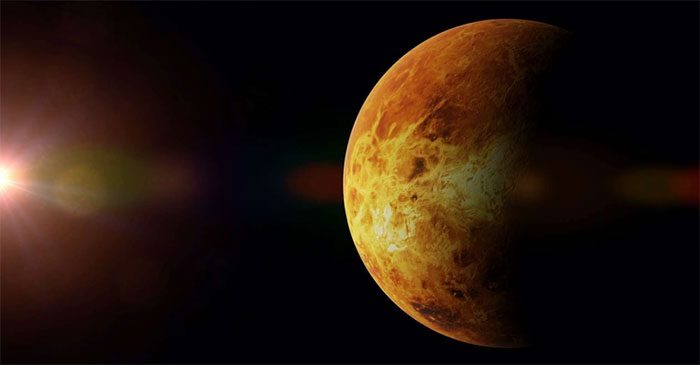Venus and Earth are considered twin planets; while Earth supports life, Venus has transformed into a burning hellscape.
Researchers believe that the current state of Venus is linked to a combination of large volcanic eruptions.

Before becoming the ‘hell’ it is today, Venus had conditions suitable for the development of life. (Image: Futura Sciences).
Significant volcanic eruption events in the past have marked Earth’s history. Their power surpasses that of asteroid impacts, which caused several mass extinctions.
One study indicates that, overall, volcanic eruptions can lead to a greenhouse effect and a catastrophic increase in temperature. While our planet has avoided becoming a “burning hell”, Venus was not so fortunate.
The large magma chambers found on Earth are remnants of intense volcanic eruptions that led to the weathering of thick basalt plateaus over millions of years.
Scientists have hypothesized that these eruptions were temporary causes of significant changes in climate and habitat on Earth.
Therefore, the emission of large amounts of greenhouse gases would raise temperatures and alter the chemical composition of the oceans. These changes could contribute significantly to the mass extinctions experienced by life on land.

Lava piles rising hundreds of meters high. The Deccan Traps in India are witnesses to a period of major magma eruptions in Earth’s history (Image: Kppethe, Wikimedia Commons).
Scientists suggest that if a single large magma chamber has the potential to change the climate, its impact is not enough to render Earth irreparable. Evidence shows that our planet continuously self-heals, providing a stable climate system conducive to life.
However, according to the authors of the study, Earth has also experienced periods when large volcanic eruptions occurred simultaneously or at least in close succession.
Venus: The vicious cycle of extreme global warming
For scientists, the simultaneous eruption of several large magma chambers could have the potential to destroy a planet, creating an irreversible vicious cycle.
This hypothesis may explain the current condition of Venus. Before becoming the hell we see today, Venus had favorable conditions for the development of life, particularly the presence of water on its surface.
However, the production of large amounts of greenhouse gases from simultaneous eruptions increased the temperature of this planet, leading to the evaporation of its oceans.
This led to an addition of water vapor to the atmosphere, further intensifying the greenhouse effect already influenced by volcanic activity, pushing the planet into a cycle of hellish warming until liquid water completely disappeared. Experts refer to this as a slow death by suffocation.

The surface of Venus as seen by the Venera 13 and Venera 14 probes. (Image: Russian Space Agency).
According to the study’s authors, Earth narrowly escaped this catastrophic fate. The question arises: how many magma chambers are needed to disrupt the climate system and transform a rocky planet into a hell?




















































